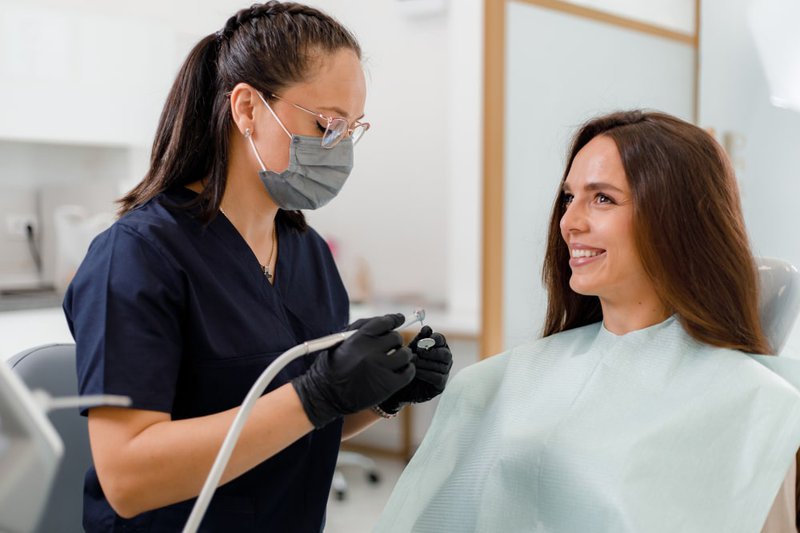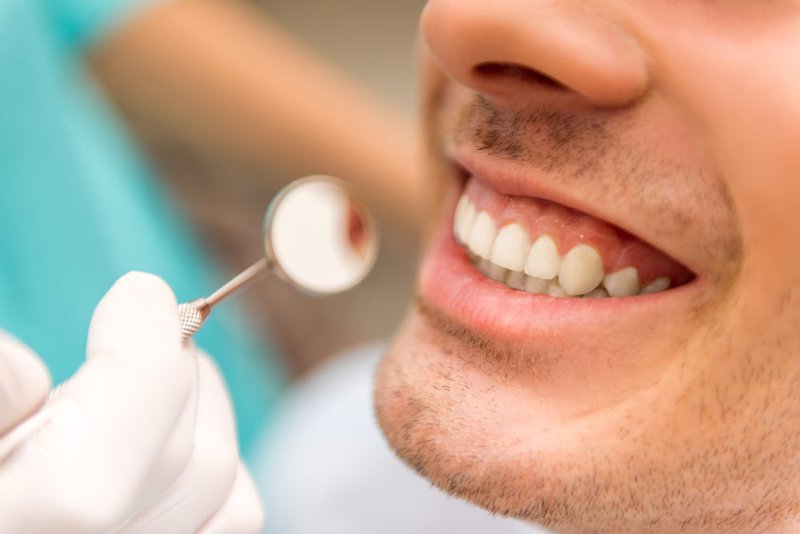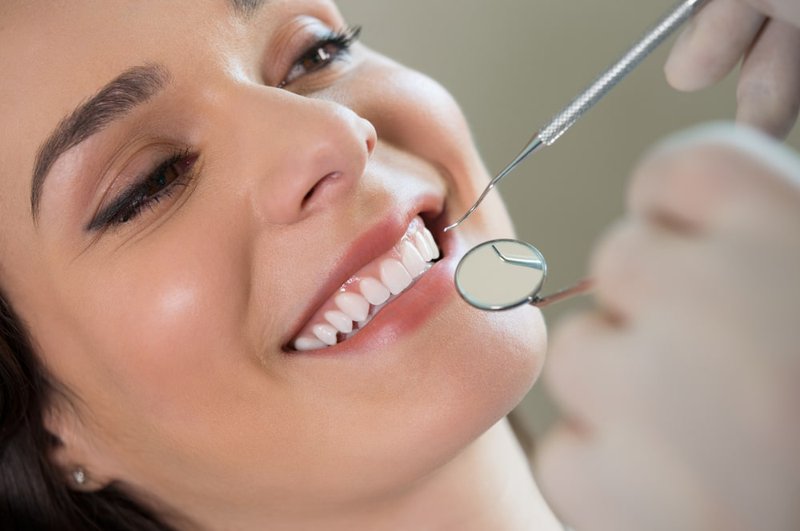
What to Expect from a Professional Dental Cleaning: Procedure, Frequency, and Benefits
Key Takeaways
- A standard professional dental cleaning includes a thorough process: exam, scaling, polishing, flossing, and fluoride application.
- Most people benefit from professional cleaning every 6 months, but individual needs vary.
- A routine dental cleaning typically takes 30 to 60 minutes; however, deep cleanings or first-time appointments may require an additional amount of time.
- Tools like ultrasonic scalers, hand instruments, and air polishers are commonly used.
- Children, adults, and individuals with specific oral health needs may require different cleaning frequencies and durations.
What does a professional dental cleaning typically involve?
A professional dental cleaning is more than just a simple brushing of the teeth — it's a structured and comprehensive process tailored to support long-term oral health. Conducted by a dental hygienist and overseen by a dentist, each step is designed to prevent cavities, gum disease, and other complications. Let’s break it down step by step.
Initial Examination
The process begins with a brief yet thorough visual inspection of your mouth by the dental hygienist. They check for signs of:
- Plaque and tartar buildup
- Gum inflammation (gingivitis)
- Tooth decay
- Oral lesions or other abnormalities
In cases where more information is needed, digital X-rays may also be taken. These help detect issues below the gum line or between teeth.
Scaling (Removal of Plaque and Tartar)
Scaling is often the most time-intensive part of the cleaning process. Hygienists use specialized tools to remove hardened plaque (tartar) and biofilm above and below the gum line.
Common instruments include:
- Ultrasonic scaler: Uses high-frequency vibrations and water to dislodge tartar.
- Hand scaler (curette): Allows for detailed, manual plaque removal in tight spaces.
Scaling is crucial because tartar cannot be removed by brushing or flossing alone.
Polishing
Once the teeth are clean of plaque and tartar, they are polished using a prophylaxis paste and a rotating rubber cup.
Polishing serves two purposes:
- Removes surface stains from foods, drinks, or tobacco
- Smooths enamel, making it harder for plaque to accumulate again
Some clinics may use air polishing systems for more effective stain removal. These devices use a jet of air, water, and fine powder.
Professional Flossing
Next comes flossing — but this is more than your daily routine. Dental hygienists:
- Use professional-grade floss
- Clean deep between teeth and below the gumline
- Identify any bleeding points, which may suggest early-stage gum disease
This step also ensures that leftover debris from the polishing phase is fully removed.
Fluoride Treatment
The final step in most cleanings is the application of fluoride. This is especially common for children and teens, but may be recommended for adults with high cavity risk.
Types of fluoride treatment:
- Varnish: Painted on teeth and allowed to set
- Gel or foam: Delivered via tray and held in the mouth for several minutes
Fluoride helps to remineralize enamel and protect against decay for several months.
Specification Table: Dental Cleaning Process
| Step | Tools Used | Duration | Purpose |
|---|---|---|---|
| Initial Exam | Mirror, explorer, X-rays (if needed) | 5–10 min | Identify visible issues |
| Scaling | Ultrasonic scaler, hand scaler | 15–30 min | Remove plaque and tartar |
| Polishing | Rubber cup, prophy paste, air polisher | 5–10 min | Smooth enamel, remove surface stains |
| Flossing | Dental floss | 2–5 min | Clean interproximal areas |
| Fluoride Application | Varnish, gel, or foam | 1–4 min | Strengthen enamel |
How often should you get your teeth cleaned by a dentist?
Most people hear “every 6 months” as the golden rule for dental cleanings. But is it that simple? The short answer: not always. While this is a helpful general guideline, your specific oral health needs may suggest a different frequency.
General Guidelines from Authoritative Sources
According to the Canadian Dental Association (CDA), most individuals benefit from a cleaning every six months. This helps maintain healthy gums, remove plaque buildup, and catch early signs of oral disease.
However, people with specific risk factors may require more frequent visits:
- Smokers
- Diabetics
- Individuals with periodontal (gum) disease
- Patients with a history of frequent cavities or crowns
In such cases, cleanings every 3 to 4 months might be necessary.
Individualized Cleaning Frequency
Oral health isn’t one-size-fits-all. Your dentist may adjust your cleaning schedule based on:
- Gum health: Early signs of gingivitis or periodontitis? You’ll need more frequent care.
- Plaque buildup rate: Some people naturally accumulate more plaque.
- Oral hygiene habits: Effective brushing and flossing may allow for longer intervals.
Adults vs. Children: A Comparison
While children typically start dental cleanings as early as their first tooth eruption, their needs differ from adults:
| Group | Recommended Cleaning Frequency | Reasoning |
|---|---|---|
| Children | Every 6 months | Monitor development, prevent early cavities |
| Adults | 6 months or individualized | Maintenance or treatment of oral conditions |
Expert Opinion
Dr. Jerry Jesin, DDS of Smile by Design, explains:
"Six-month cleanings are sufficient for most patients, but those with ongoing periodontal issues or poor oral hygiene may need more frequent visits to prevent deterioration."

How long does a dental cleaning usually take from start to finish?
The duration of a dental cleaning can vary significantly. It depends on whether you’re coming in for a routine cleaning, a deep cleaning, or your very first visit.
Standard Cleaning (Routine Visit)
A typical cleaning appointment, assuming healthy gums and no complications, usually takes 30 to 60 minutes. This includes:
- Medical history update
- Full oral exam
- Scaling, polishing, flossing
- Fluoride treatment (if required)
If the patient is returning to a familiar clinic and no new X-rays are needed, the appointment is on the shorter end.
Deep Cleaning (Scaling and Root Planing)
For patients with periodontal disease or excessive tartar buildup, a deep cleaning is necessary. This is typically split into two 45-minute sessions:
- One half of the mouth is cleaned at each visit
- Local anesthesia is often administered
- Special tools are used to clean below the gumline
Total time: 90–120 minutes, across two appointments.
First-Time Dental Visit
If you haven’t visited a dentist in years—or ever—your initial appointment may take 60 to 90 minutes. Why longer?
- Full set of X-rays
- Baseline charting of gum depth
- Comprehensive oral exam
- Possibly a more intensive cleaning
Comparison Table: Cleaning Duration by Type
| Type of Cleaning | Duration | Characteristics |
|---|---|---|
| Standard Cleaning | 30–60 minutes | Routine care, basic scaling and polishing |
| Deep Cleaning | 90–120 minutes | In-depth, includes anesthesia and root planing |
| First-Time Appointment | 60–90 minutes | Diagnostic assessments and comprehensive cleaning |
Does dental cleaning hurt or cause discomfort?
Many patients wonder if professional dental cleanings will hurt. The answer often depends on your oral health condition, personal sensitivity, and the type of cleaning performed.
Pain vs. Pressure: What to Expect
In general, routine cleanings cause minimal discomfort. Most patients describe the sensation as pressure or vibration, particularly during ultrasonic scaling.
However, if you have:
- Sensitive teeth
- Inflamed or receding gums
- Large tartar buildup
You may experience temporary discomfort or stinging during certain phases, particularly during the scaling process.
When Dental Cleaning Might Hurt
There are specific conditions that increase the likelihood of pain during or after cleaning:
- Gum disease (gingivitis or periodontitis): Inflamed tissues are more prone to irritation.
- Exposed dentin: If enamel is worn away, the inner tooth layer is more sensitive.
- Deep cleanings: These procedures extend below the gumline and may require local anesthesia.
Pain-Relief and Comfort Techniques
Modern dental practices use a variety of methods to minimize discomfort:
- Topical numbing gels are applied to the gums
- Desensitizing agents for exposed dentin
- Short breaks during the procedure
- Warm water rinses to reduce cold sensitivity
As Dr. Rob Eisen, DDS, notes:
"We understand that patients may feel anxious about discomfort. Our team uses the latest techniques to keep you as comfortable as possible — most of the time, a cleaning is entirely pain-free."

What is dental cleaning, and why is it essential for oral health?
At its core, dental cleaning is the professional removal of plaque, tartar, and stains from the teeth and gums. Unlike at-home brushing or flossing, it reaches areas that are difficult to clean and addresses buildup that can only be removed with specialized tools.
Definition and Components
Dental cleaning — also known as prophylaxis — typically involves:
- Scaling and polishing
- Interdental cleaning (flossing)
- Fluoride treatment (optional)
It is a preventive procedure, meaning it's designed to stop oral health problems before they escalate.
Why Brushing and Flossing Aren’t Enough
Daily oral hygiene is vital, but it has its limits:
- Plaque hardens into tartar, which brushing can’t remove
- Hidden areas between teeth or under the gums may be missed.
- Stains from coffee, tea, or tobacco accumulate
Consequences of Skipping Cleanings
Neglecting regular dental cleanings may lead to:
- Gum inflammation and bleeding
- Bad breath
- Tooth loss in advanced cases
What benefits can you expect from routine professional cleanings?
Dental cleanings aren’t just about aesthetics — they provide a full spectrum of health, financial, and quality-of-life benefits.
Preventing Cavities and Gum Disease
Cleanings help remove plaque and tartar that lead to:
- Cavities: Prevents tooth decay in its early stages
- Gingivitis: Reduces inflammation before it becomes serious
- Periodontitis: Maintains gum health and prevents tooth loss
Fresh Breath and Brighter Smile
Cleaning eliminates odour-causing bacteria and removes stains caused by:
- Coffee
- Tea
- Red wine
- Smoking
Patients often leave with noticeably smoother and shinier teeth.
Cost Savings in the Long Term
Routine cleanings help avoid:
- Emergency procedures (root canals, extractions)
- Expensive restorations (crowns, implants)
Are there risks or side effects associated with dental cleanings?
While dental cleanings are overwhelmingly safe and beneficial, some individuals may experience minor side effects or temporary discomfort. Knowing what’s normal — and when to be concerned — can help you feel more confident during your next visit.
Common Temporary Side Effects
Some mild and short-term reactions are completely normal:
- Tooth sensitivity: Especially to hot or cold, due to exposed dentin or recent scaling
- Gum soreness or bleeding: Often seen in patients with plaque buildup or early gum disease
- Jaw fatigue: Caused by keeping the mouth open for extended periods
These symptoms typically resolve within 24 to 48 hours.
When Side Effects May Indicate a Problem
There are rare cases where discomfort could signal a complication:
- Persistent bleeding (more than 2 days) may suggest gum disease
- Swelling or pus could indicate a developing infection
- Extreme pain may point to an exposed nerve or improper technique
In such cases, it’s essential to follow up with your dentist promptly.
Risk Management by Professionals
Dental professionals take several precautions to reduce risk:
- Topical anesthetics to reduce sensitivity
- Antibacterial rinses post-cleaning to minimize inflammation
- Gentle techniques and individualized scaling plans

How much does a professional dental cleaning usually cost in Canada?
Understanding the cost of dental cleanings in Canada helps patients plan and make informed decisions. The price depends on the type of cleaning, location, insurance coverage, and whether it's your first appointment.
Average Cost by Type of Cleaning
| Type of Cleaning | Typical Cost (CAD) | Notes |
|---|---|---|
| Routine Cleaning | $120–$250 | Includes scaling, polishing, and fluoride |
| Deep Cleaning | $150–$400+ | Often billed per quadrant, requires multiple visits |
| Initial Visit (with X-rays) | $200–$300+ | Comprehensive assessment and baseline imaging |
Prices may vary slightly between provinces or urban and rural locations. For example, fees in Toronto or Vancouver tend to be on the higher end.
Insurance Coverage
Most private dental insurance plans in Canada cover:
- Two cleanings per year
- 80–100% of routine cleaning fees
- Partial coverage for deep cleaning, if medically justified
Patients should confirm:
- Number of covered cleanings per year
- Coverage for exams, X-rays, and fluoride
- Maximum reimbursement amount
Hidden Costs and Considerations
Some additional costs might include:
- Dental exam fee: $60–$90
- X-rays: $25–$8, depending on the number
- Periodontal charting for deep cleanings
Pro tip: Ask your provider for a detailed breakdown of the treatment plan before proceeding.
How does a dental cleaning compare to at-home oral hygiene?
It’s easy to assume that brushing and flossing alone are enough. While essential, home care isn’t a substitute for professional dental cleanings — they work best when used in combination.
At-Home Oral Hygiene: Strengths and Limits
At-home methods include:
- Brushing twice daily
- Flossing at least once a day
- Mouth rinses (fluoride or antiseptic)
These habits help remove plaque and food debris, reduce bacteria, and maintain fresh breath.
However, they can’t:
- Remove tartar (hardened plaque)
- Detect cavities or gum disease early
- Polish away deep stains
- Reach deep periodontal pockets
Professional Cleanings: What They Add
Dentists and hygienists use tools like ultrasonic scalers and air polishers to:
- Remove tartar above and below the gumline
- Detect issues using X-rays and probes
- Apply fluoride to strengthen enamel
- Provide clinical assessments
In short, cleanings go beyond surface care, targeting buildup and issues that aren’t visible at home.
Comparison Table: Home Care vs. Professional Cleaning
| Feature | At-Home Care | Professional Cleaning |
|---|---|---|
| Plaque removal | ✅ Yes | ✅ Yes |
| Tartar removal | ❌ No | ✅ Yes |
| Cavity detection | ❌ No | ✅ Yes |
| Gum pocket cleaning | ❌ No | ✅ Yes |
| Surface stain removal | ❌ Limited | ✅ Thorough |
| Fluoride application | ❌ Occasionally | ✅ Targeted & concentrated |
| Oral health assessment | ❌ No | ✅ Expert-guided |
What should you remember about getting your teeth professionally cleaned?
Dental cleanings are not just about appearance — they are an essential component of preventive oral care. Whether you’re managing chronic gum disease or simply maintaining your oral health, regular cleanings support long-term health and comfort.
Summary of Procedure
A typical dental cleaning includes:
- Visual exam of the teeth and gums
- Scaling to remove tartar
- Polishing to remove stains
- Flossing to clean between teeth
- Fluoride treatment (as needed)
Recommended Frequency
- Most patients: every 6 months
- High-risk patients: every 3–4 months
- Children: every 6 months with early monitoring
Your dentist may adjust this timeline based on your gum health, lifestyle, and dental history.
Benefits You Shouldn’t Overlook
- Prevents tooth decay and gum disease
- Reduces halitosis (bad breath)
- Improves the cosmetic appearance of teeth
- Saves money by avoiding expensive treatments later
Main Points Summary Table
| Key Point | Details |
|---|---|
| Procedure Steps | Exam, scaling, polishing, flossing, fluoride |
| Cleaning Duration | 30–60 minutes (routine), up to 90+ (deep) |
| Common Tools | Ultrasonic scaler, hand tools, prophy paste |
| Cleaning Frequency | 6 months (standard), 3–4 months (high-risk) |
| Health Benefits | Prevents decay, gum disease, and bad breath |
| Cosmetic Improvements | Removes stains, smooths enamel |
| Insurance Coverage (Canada) | Often covers 1–2 cleanings per year |

